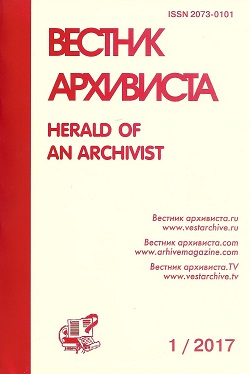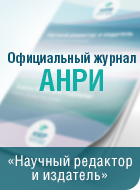The rise and functioning of parish schools in the late 19th century Upper Volga region. According to archive materials and published sources



| 13 February 2024
Posted in
Archival funds and collections
Iyerusalimskaya S.Y., Yaroslavl, Russian Federation
The rise and functioning of parish schools in the late 19th century Upper Volga region. According to archive materials and published sources
Annotation
The paper focuses on the development of popular education in the late 19th century. Upper Volga region, namely, on the rise and peculiarities of parish school activities. The term the Upper Volga region includes the territories of the Tver, Yaroslavl, Kostroma and Vladimir provinces. In the late 1870s, due to the reinforcement of the “Narodnaya Volya” terrorism as well as the aggravation of Russia social-political situation, the authorities decided to turn to the Russian Orthodox Church for help in organizing elementary educational institutions of a new type. In 1884 the name “parish schools” was allotted to these establishments. A special role in the process of organizing such schools belongs to K.P.Pobedonostsev, Ober-procurator of the Most Sanctified Synod. Negative attitude to parish schools on the part of some local governments, liberal-minded Zemstvos (People’s Assemblies) in particular, is noted. A great number of People’s Assemblies’ members looked upon parish schools as obstacles on the way of progressive society development. Between 1881-1894 the number of parish schools rose to become 31835 with 981076 learners on the whole. Traditionally, such schools were opened by the parish priest’s initiative and by parishers, they were financed with budget money, more than 20% of the temple takings, etc. The teaching staff included the parish priest and a specially hired teacher, male or female, who had a professional education. Lessons were conducted in the priest’s house as few schools had their own class-rooms. The school year lasted from November through May and made one year (one-class schools) or two years (two-class schools). Having analysed the arrays of statements concerning the condition of the Upper Volga region parish schools, which are stored in state archives of the territories in question and their branches, the author has built a model of the average statistical parish school of the late 19th century Upper Volga region: a rural school organized by a local priest who, together with his wife, is engaged in teaching 20-30 peasant children from the nearby settlements, with boys being the majority of pupils.

Keywords
Source, parish schools, popular education, pupils, teaching staff, priests, the Upper Volga region
Download the article: pdf
About the authors
Iyerusalimskaya Svetlana Yurievna, Candidate of Historical Sciences, junior research worker of the Demidov State University, Yaroslavl, Russian Federation, 8-910-966-10-00, This e-mail address is being protected from spambots. You need JavaScript enabled to view it











